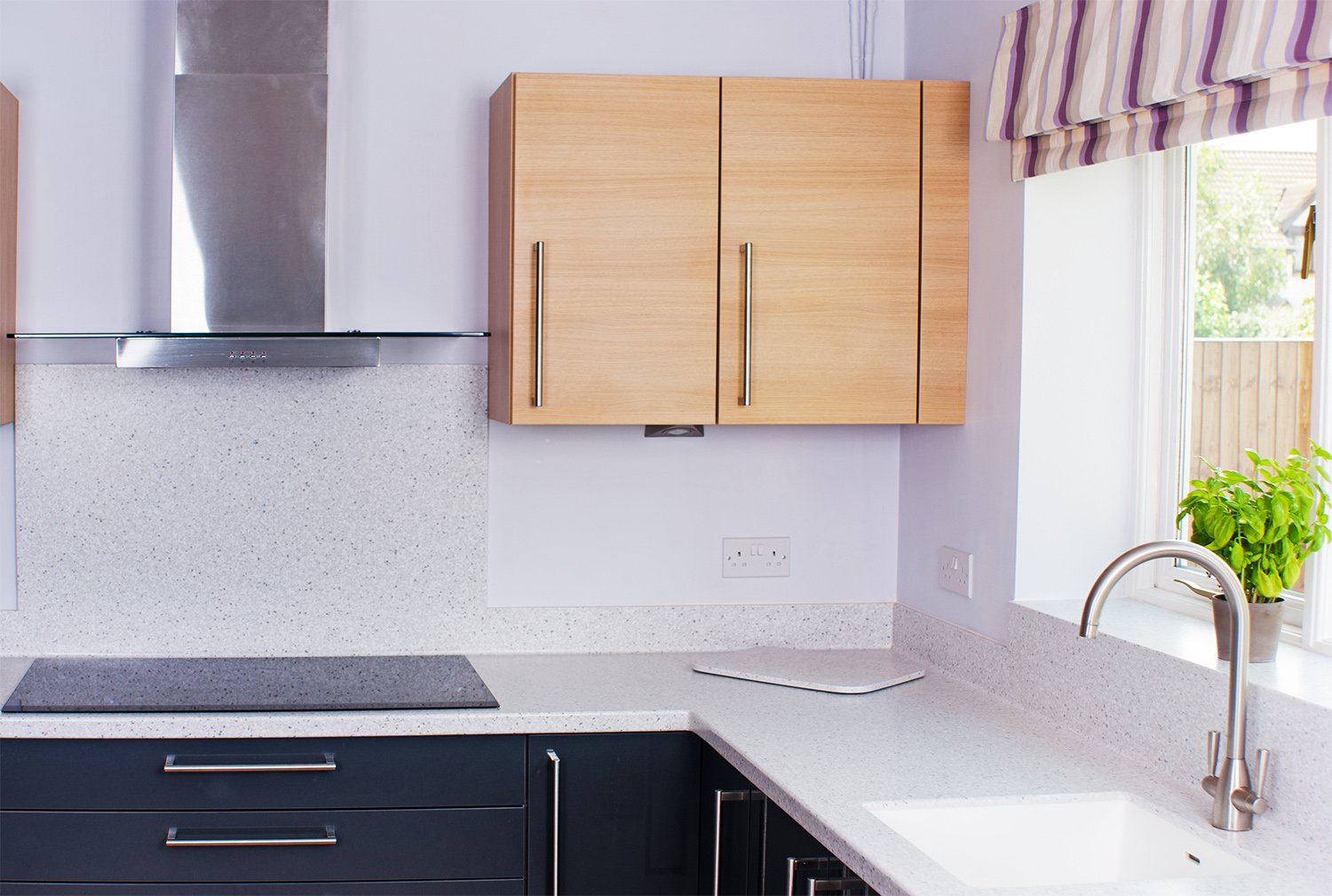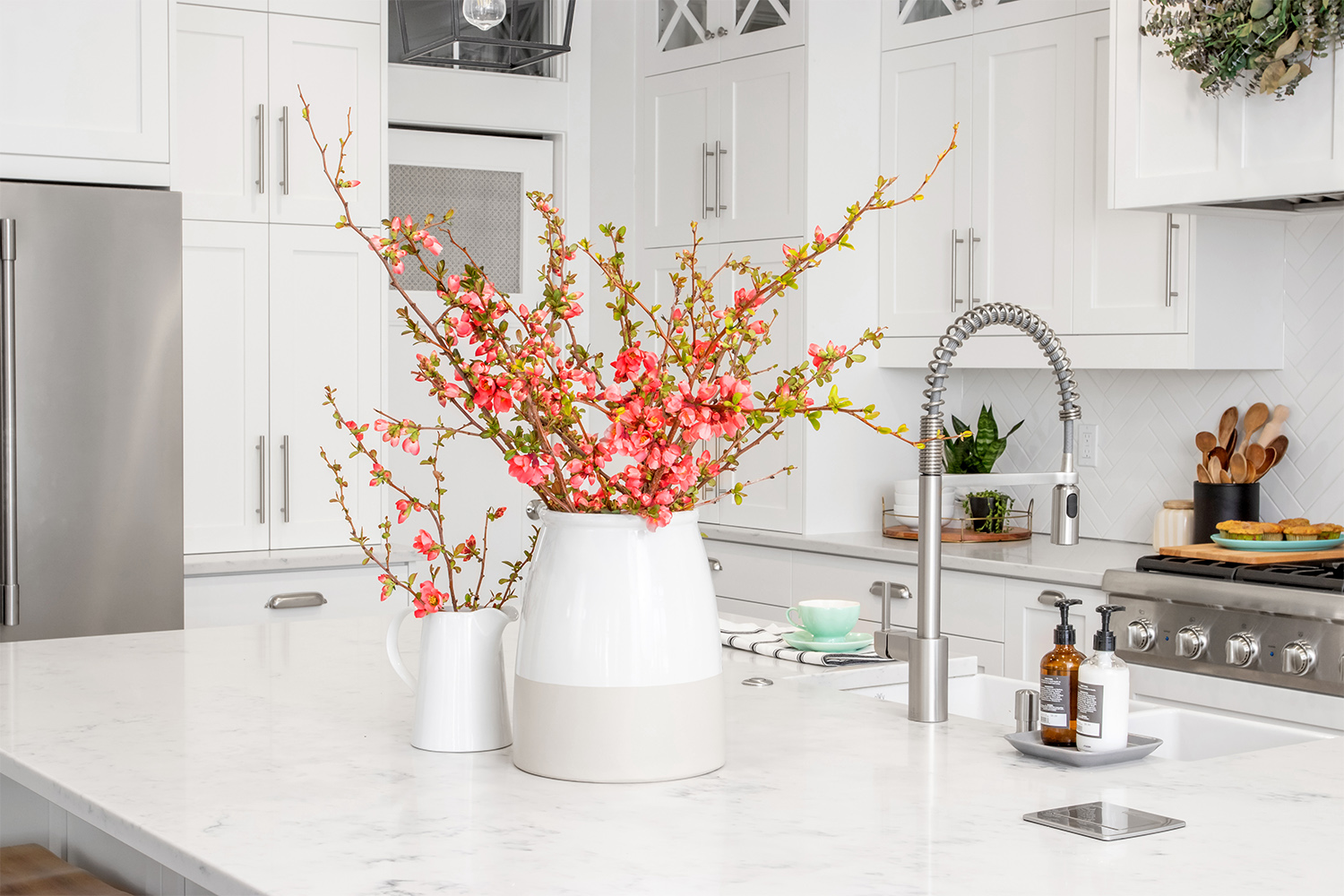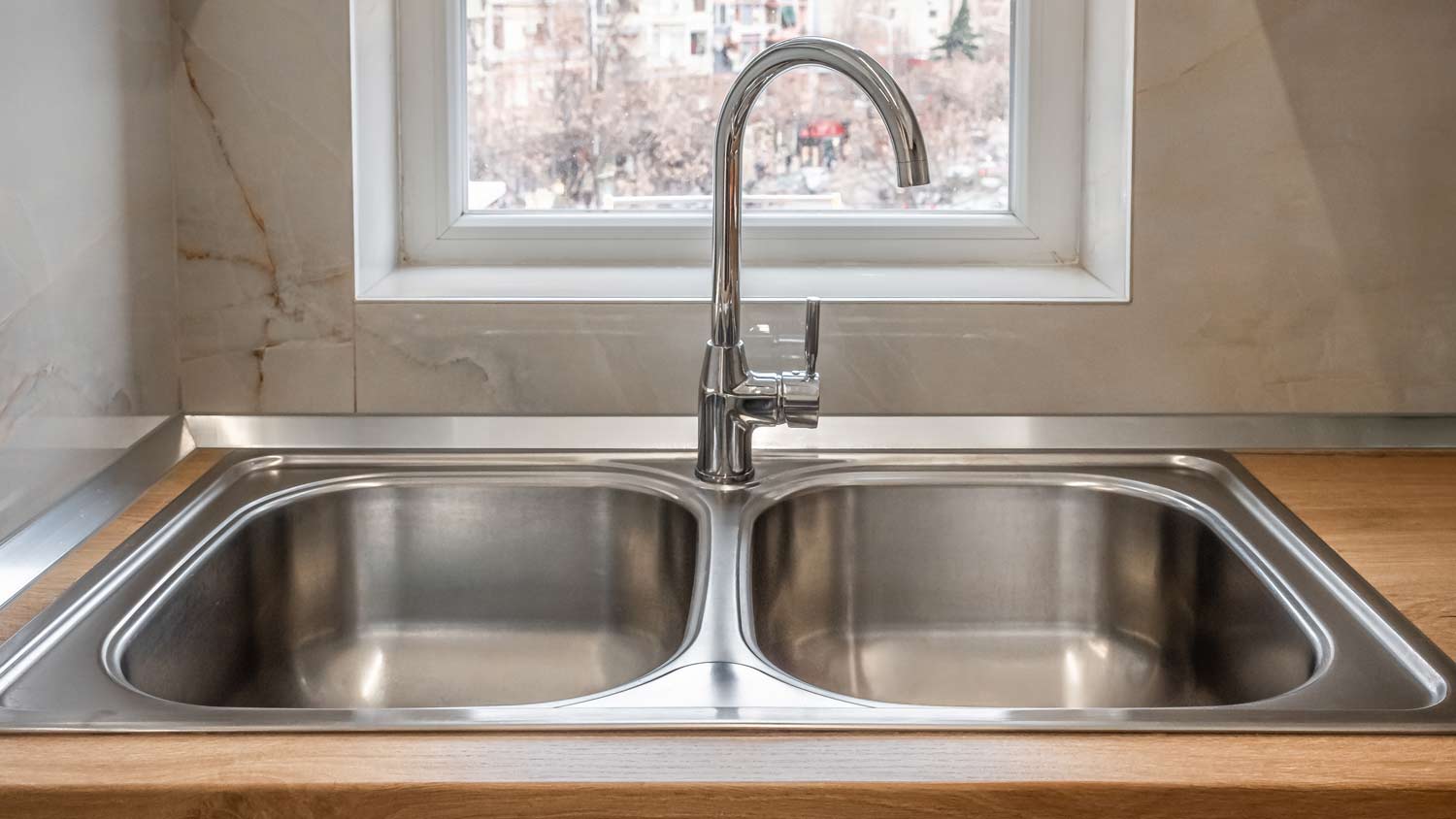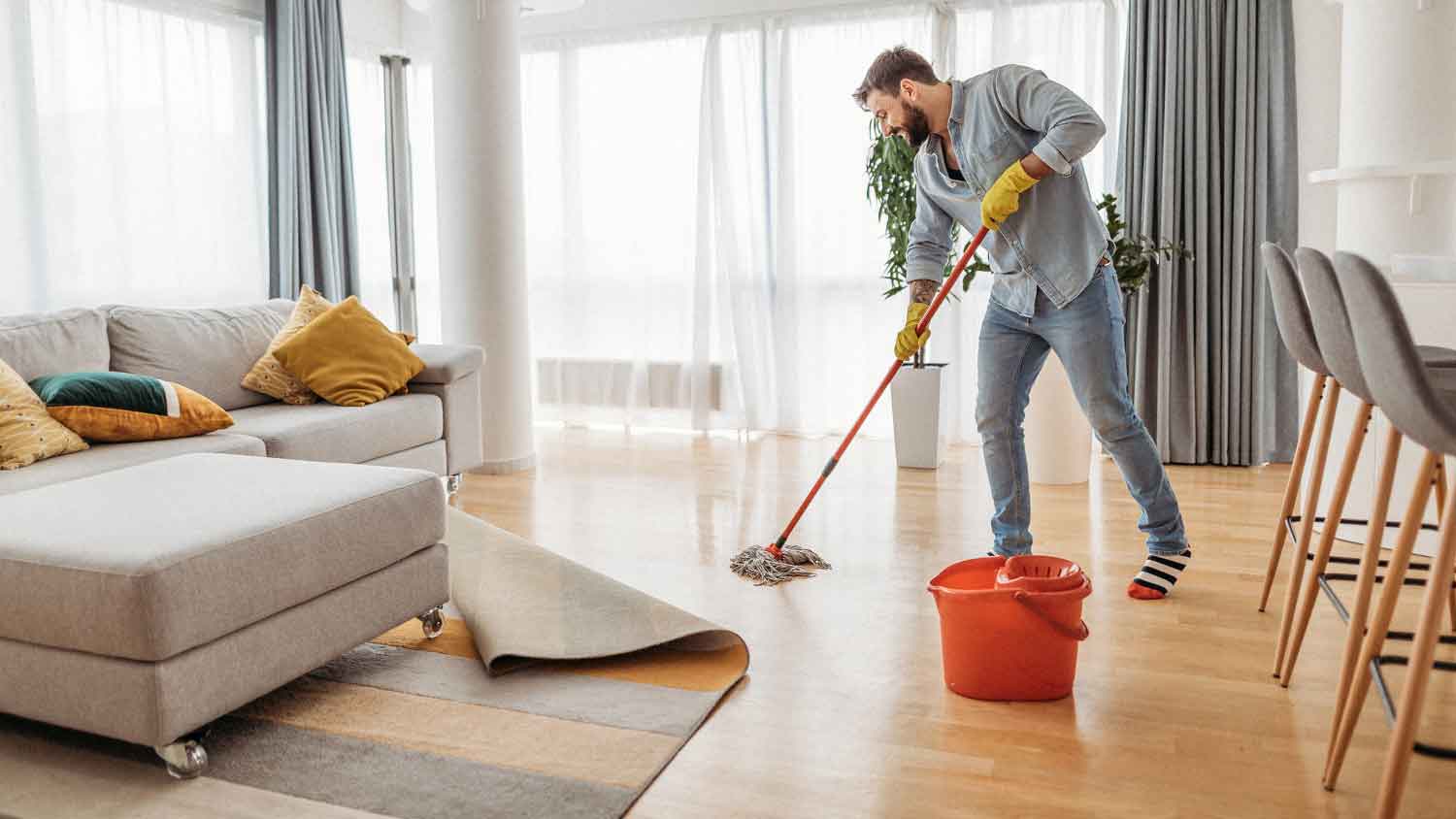How to Get Stains Out of Different Types of Countertops, From Quartz to Concrete
With the right cleaning products and procedures, you’ll have sparkling surfaces in no time


You can clean and remove stains on marble, tile, wood, stainless steel, granite, and other kitchen or bathroom countertop surfaces easily and safely. Knowing how to keep surfaces spotless and prevent stains helps countertops look better and last longer, and it keeps your kitchen or bath looking clean overall. This is a DIY project, unless countertops have been damaged, in which case bringing in a pro might be necessary.
Why Should You Care for Your Countertops
Your countertops play a huge role in your kitchen or bathroom; it’s where you prep food, store useful tools and appliances, or get ready for the day. Not to mention, they can also add value to your home. Keep your countertops looking new and give them the TLC they need to last with these cleaning tips.
Each type of countertop requires a specific cleaning method, stain removal strategy, and sealing process to get your maintenance done. Get rid of stains and prevent marks and scratches to keep your kitchen and bathroom looking snazzy for years to come.
How to Clean and Remove Stains From Countertops
Knowing which types of counters you have is essential to identifying the best ways to clean them and avoiding damaging the material. Next, have the right cleaning supplies and tools on hand. For example, you can use lemon juice and baking soda to remove stains from stainless steel, but lemon juice can cause damage natural stones like marble.
If you’re unsure how to clean your countertop, ask the manufacturer or contractor who installed them. The following steps detail cleaning, removing stains, and sealing the most common countertops.
Granite Countertops
Granite is a popular countertop choice because it’s 100% natural, durable, and comes in hundreds of colors. With the proper maintenance, it will look great for many years.
Here’s how to clean granite countertops:
1. Clean
Wipe and rinse with warm, soapy water. Avoid abrasive cleansers that may cause scratches. Fixing bleach stains on granite can be tricky, so avoid this cleaning method as well.
2. Stain Removal
To remove stains, apply a baking soda paste, cover it with plastic wrap, and then let it sit overnight. Wipe up with warm water and a soft cloth.
3. Seal
Use the water droplet test to determine when to reseal. Leave a few drops of water on your counter. If the droplet stays on the surface after 15 minutes, no resealing is needed. If the drops spread and leave a dark mark on the stone after you blot off the excess, apply a product formulated for stone.
Marble Countertops
Marble counters are unique, heat resistant, and durable. Once sealed, they are stain-resistant, and because marble is a natural stone, it’s resistant to scratching and cracking. However, spills still need to be wiped up quickly, especially if it’s a mislaid juice box or glass of wine, because marble is quite porous.
Here’s how to clean marble countertops:
1. Clean
Wipe with a damp, soft cloth and then dry with a clean cloth to prevent streaking and water spots from forming. Use pH-neutral dishwashing liquid mixed with warm water for deeper cleans.
2. Stain Removal
To avoid stains, immediately blot acidic liquids such as wine, orange juice, tomato, or soft drinks, as they can permanently etch marble surfaces. Etched marble may require professional buffing.
3. Seal
Use the water droplet test as described for granite to determine if the counter needs to be resealed. If it fails, use a product formulated for marble’s porous surface.

Laminate Countertops
Laminate is a common countertop material found in homes because it’s so economical, and it comes in a wide variety of colors and patterns. It withstands stains and heat, but it is easily scratched by knives. It isn't repairable, so if you have laminate, always remember to use a cutting board. If your laminate countertops are damaged, just won’t get clean, or could benefit from a weekend renovation, you can DIY remove the countertop and start with a fresh design.
Here’s how to clean laminate countertops:
1. Clean
Wipe with warm soapy water, a mild bleach solution, or a non-abrasive kitchen cleaner. Remember to test bleach in an inconspicuous spot first, as it may stain or cause surface damage.
2. Stain Removal
To remove stains, let a baking soda paste sit on a surface stain for a few minutes, then wipe it up and rinse with water. To remove grease buildup, use a kitchen cleaner or a 1:1 vinegar and water solution.
3. Seal
No sealing is needed.
Tile Countertops
Tile is versatile, allowing you to create a variety of patterns with different shapes and colors. It creates a whimsical look in a kitchen or bath. However, it can be a challenge to keep clean, especially the grout, which is porous.
Here’s how to clean tile countertops:
1. Clean
Use a non-abrasive multipurpose cleaner, as soap may leave behind a film, and a cotton cloth. Or use a combination of baking soda, liquid dish soap, water, and vinegar.
2. Stain Removal
Tile is stain-resistant, but the grout used in between the tiles is susceptible to mold and staining. Clean stained grout using a toothbrush and mildew-fighting cleaner or bleach diluted with water at a 1:1 ratio. Allow the cleaner or bleach to sit for up to 10 minutes to penetrate tough stains.
3. Seal
Seal unglazed tile and grout and re-caulk with mildew-resistant silicone products at least every other year. Glazed ceramic tile doesn’t require sealing.
Butcher-Block Countertops
Butcher-block countertops are beautiful. They double as a cutting board, and the softer surface makes for a quieter kitchen. However, because it’s wood, it’s susceptible to scratches and stains.
Here’s how to clean butcher-block countertops:
1. Clean
Spray wood cleaner onto a sponge rather than applying it directly to the surface. Avoid using bleach and abrasive cleaners, as they can cause damage.
2. Stain Removal
Use a sponge to apply a mixture of a teaspoon of vinegar per one-fourth cup of water. Sand out small burns, cuts, and scratches.
3. Seal
Rub with tung or mineral oil each month or at least quarterly to keep wood from drying out. Wipe up excess oil that doesn’t soak in to prevent the surface from becoming tacky and attracting dirt.

Quartz Countertops
Quartz countertops are the most customizable and durable on the market. You have to try pretty hard to damage it. However, it comes with a price tag that reflects its growing popularity. Think of that as a motivator to keep it looking great for as long as possible.
Here’s how to clean quartz countertops:
1. Clean
Use a cloth with mild soap and warm water to clean—and you’re done!
2. Stain removal
Quartz is nonporous as well as scratch and stain-resistant.
3. Seal
No sealing is needed.
Glass Countertops
Crushed glass countertops are works of art. Because of the blend of glass used to make them, each is a unique addition to your home. Besides delicate corners, they are susceptible to staining by foods with high acid content.
Here’s how to clean glass countertops:
1. Clean
Spray glass or multipurpose cleaners onto a soft cloth or sponge rather than applying directly onto the surface to reduce dirt and grime buildup. Avoid using abrasive cleaners and scratchy cleaning tools.
2. Stain Removal
Glass doesn’t stain, but you can scrub stuck-on grime with dishwashing detergent and hot water.
3. Seal
No sealing is needed.
Stainless Steel Countertops
Stainless steel countertops are sleek and modern. They are durable and nonporous, making them the go-to for the food industry. They can be scratched, though, so non-abrasive cleaners are a must.
Here’s how to clean stainless steel countertops:
1. Clean
Remove smudges with cleansers for stainless steel. Soap and water also works, but spots may appear if you let the water sit for too long.
2. Stain Removal
Stainless steel resists stains, but it’s susceptible to rust marks from metal scouring pads, cast-iron pans, and other rust-prone objects. To remove rust marks, use a mild abrasive cleanser or a homemade lemon juice and baking soda paste.
3. Seal
No sealing is needed.

Concrete Countertops
Concrete countertops don’t often pop into mind when you are planning a kitchen remodel. But high-end concrete is as durable as granite or slate and is completely customizable. It exudes a contemporary feel in a modern-industrial style. It’s also scratch and heat resistant.
Here’s how to clean concrete countertops:
1. Clean
Wipe counters with a soap-and-water mixture, or use a commercial concrete cleaner or pH-balanced wipes.
2. Stain Removal
Try laundry detergent and stain remover for new stains. For old-stain removal, soak a cotton ball in bleach and press it on the stain for five to 10 minutes. Or make a paste from hydrogen peroxide, a cup of flour, and water.
Let the mixture soak into the stain for a few hours. Cover the area with plastic wrap if it dries out too quickly. Remove the paste with a wet cloth while scrubbing the stain. If you use these methods, test an inconspicuous area first to make sure the color stays fast.
3. Seal
Concrete is highly porous. Seal it with concrete sealant to prevent stains, scratches, and water absorption.
Tips for Maintaining Your Countertops
As mentioned above, countertop maintenance will depend on the specific type of material. For instance, butcher-block countertops require different care than quartz countertops. In general, though, there are some tips to help keep your countertops in good shape.
You can prevent scratches and stains by being careful with the countertop surface. Make sure to use coasters and cutting boards, and avoid putting any hot cookware on the kitchen countertop surface. For the bathroom, consider purchasing trays to store toiletries and keep your countertop clean.
Don’t hesitate to clean up any spills as soon as possible to avoid stains. For example, ketchup or coffee spills on a butcher-block counter can soak into the wood with time and leave a stain behind.
Protect your natural stone countertops, including limestone and marble, from etching—discoloration and surface damage. Acidic liquids like lemon juice, wine, tomato sauce, and vinegar can cause etching if you don’t wipe up a spill right away.
One of the best things you can do for your countertop is to stay on top of sealing (if the material requires it). Sealing will help protect the surface from stains and scratches and can help keep it looking shiny.
Cost to Clean Countertops Yourself vs. Hiring a Pro
Now that you know how to clean different types of countertops, you should be set. Most of the time, the right materials and some elbow grease will get your countertops back to a pristine state. But if the countertop has been damaged, you might need to hire a local countertop repair pro.
Here is the cost difference for DIY vs. a professional:
Materials cost for DIY: $1–$20
Cost for a professional counter resurfacing: Average $200–$500
Knowing how to clean different types of countertops is essential to having a sparkling surface without damaging it. You should be able to have your counters looking new in no time using the above methods.
Frequently Asked Questions
Baking soda can damage some countertops, but it makes an excellent mild abrasive for removing stains on other countertops. For example, never use baking soda on quartz or glass countertops, but you can use it on laminate and tile. Stay away from using it on quartz because it can scratch and damage the counter, and glass is prone to scratches. Since baking soda is a mild abrasive, you can only use it on certain surfaces.
Rubbing alcohol won’t damage most countertops, and you can mix it with water to create a disinfecting spray to keep your kitchen clean. It’s safer than using bleach on countertops, which can stain and cause discoloration. Be careful with rubbing alcohol when it comes to lacquered or varnished surfaces, though.
You can occasionally use hydrogen peroxide to remove stains on concrete and granite countertops. Hydrogen peroxide is an oxidizing agent that cleans without bleaching surfaces, which is why it’s so popular as a budget-friendly cleaner. However, it’s still somewhat acidic, so you should use it sparingly on certain countertops.
Due to the acidity, using vinegar to clean quartz countertops can actually damage them. In fact, doing so can cause discoloration and surface damage in the quartz. While it’s possible to clean other countertops, like laminate, tile, and butcher block, with vinegar, it’s best to stay from this cleaning solution if you have quartz in your kitchen or bathroom.





- 11 Unique and Unusual Kitchen Countertop Ideas
- The Top 10 Types of Countertop Materials for Your Home
- 10 Affordable Kitchen Countertop Ideas You’ll Love
- 17 Beautiful Granite Countertop Alternatives
- The Top 7 Types of Stone Countertops for Your Kitchen
- 9 Low-Maintenance Countertops to Make Your Kitchen Shine
- 6 Nonporous Countertops to Consider for Your Kitchen
- How To Paint Countertops: A Step-by-Step Guide
- 23 Kitchen Countertop Ideas to Fit Any Style
- How to Cut Countertops for a DIY Kitchen Reno










